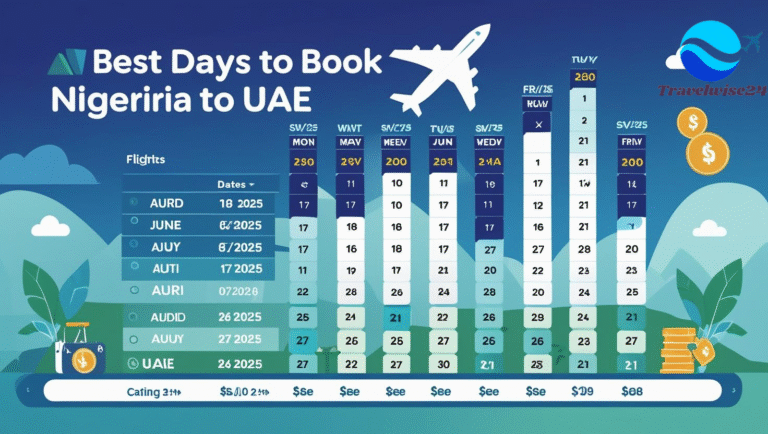Read the Fine Print on Your E-Ticket
E-tickets have revolutionized the way we travel, eliminating paper tickets and making boarding as simple as showing your phone or ID. However, these digital documents contain crucial information that many travelers glance over sometimes with costly consequences. At Travelwise24, we believe that understanding your e-ticket’s fine print can help you avoid unwelcome surprises and travel more confidently.
The Anatomy of an E-Ticket
Before diving into the fine print, it’s important to understand the basic structure of your e-ticket. As we covered in our guide to decoding your airline ticket, an e-ticket typically contains:
- Passenger information
- Flight details and flight number
- Reservation code (PNR)
- Ticket number
- Fare information
- Baggage allowance
- Terms and conditions
Let’s focus on the often-overlooked elements that can impact your journey.
Deciphering Fare Conditions
Fare Basis Code
This cryptic sequence of letters and numbers might look meaningless, but it contains valuable information about your ticket:
Example: Y1N7PXYZ
- The first letter usually indicates the fare class (Y = full-fare economy, J = business, F = first class)
- Following characters indicate restrictions, seasonal pricing, or other conditions
For a comprehensive breakdown of fare classes, see our article on Understanding Airline Fare Classes.
What to Look For:
- Refundability: Terms like “NON-REF” or “NON-REFUNDABLE” indicate you cannot get your money back if you cancel.
- Changeability: Look for “CHANGE FEE APPLIES” or specific dollar amounts for making changes.
- Validity: Many tickets have a “VALID FOR XX MONTHS” clause that determines how long you can use the ticket value if changed.
Baggage Allowance Details
The fine print often contains specific baggage information that goes beyond the basic “1 checked bag” allowance:
What to Look For:
- Weight limitations: Maximum weight per bag (often different for economy vs. premium cabins)
- Size restrictions: Maximum linear dimensions (length + width + height)
- Special items: Provisions for sporting equipment, musical instruments, or medical devices
- Carry-on specifications: Size and weight limits for cabin baggage
- Excess baggage fees: The cost of checking additional bags or overweight items
Pro tip: Baggage allowances often vary by route, fare class, and loyalty status. Always check your specific e-ticket rather than relying on general airline policies.
Codeshare Information
Your e-ticket may show one airline, but you might fly on another carrier’s plane due to codeshare agreements. This critical information is often buried in the fine print.
What to Look For:
- Phrases like “OPERATED BY” followed by an airline name
- Different flight numbers listed together (e.g., “UA8765/LH452”)
- Terminal information that mentions partner airlines
This matters because:
- Different airlines have varying carry-on allowances
- Loyalty benefits might not apply on partner flights
- Terminal changes might require extra transit time
For more information on flight numbers and codeshares, check our article on flight numbers versus ticket numbers.
Schedule Change Policies
Airlines frequently adjust flight times after booking, and your e-ticket’s fine print outlines your rights when this happens.
What to Look For:
- Notification requirements: How and when the airline must inform you of changes
- Rebooking options: Whether you’re entitled to alternative flights
- Refund eligibility: When schedule changes qualify you for a full refund
- Time thresholds: Many policies only apply if changes exceed certain time frames (e.g., more than 2 hours)
No-Show Clauses
One of the most punitive fine print items involves “no-show” policies. Missing one flight segment without canceling in advance can have severe consequences.
What to Look For:
- Automatic cancellation language: “FAILURE TO USE ANY SEGMENT MAY RESULT IN CANCELLATION OF ALL REMAINING SEGMENTS”
- Return flight protection: Instructions on how to preserve your return if you must miss your outbound flight
- Reporting timeframes: Deadlines for notifying the airline about missed segments
Stopover and Connection Rules
For multi-city or connecting itineraries, the fine print contains important details about your layovers.
What to Look For:
- Minimum connection times: The least amount of time required between flights
- Maximum connection times: Beyond which your journey is considered a stopover rather than a connection
- Stopover allowances: Whether your fare permits extended stays at intermediate points
- Airport changes: Information about transfers between airports in the same city
Special Assistance Provisions
If you require special assistance, your e-ticket should include these arrangements, but often with specific conditions.
What to Look For:
- Pre-notification requirements: Deadlines for confirming special assistance needs
- Documentation requirements: Medical forms or certificates that might be required
- Equipment restrictions: Rules for mobility devices or medical equipment
- Service animal policies: Requirements for traveling with service animals
Check-In and Arrival Time Requirements
Airlines specify mandatory check-in and airport arrival times in the fine print, and failing to meet these deadlines can result in denied boarding with no compensation.
What to Look For:
- Check-in deadlines: Different for domestic vs. international flights
- Document verification timeframes: Usually earlier for international travel
- Gate closure times: Often earlier than the stated departure time
- Reconfirmation requirements: Some international routes still require flight reconfirmation
Fare Rules and Restrictions
The most complex part of your e-ticket fine print is often the fare rules section, which can contain dozens of restrictions.
What to Look For:
- Advance purchase requirements: How far ahead you must book
- Minimum/maximum stay requirements: How long you must remain at your destination
- Blackout dates: Dates when your fare cannot be used
- Routing restrictions: Whether changes to your route are permitted
- Upgrade eligibility: Whether your fare can be upgraded with points or money
Travel Insurance Details
If you purchased insurance through the airline, the coverage details are usually summarized in your e-ticket’s fine print.
What to Look For:
- Coverage limits: Maximum reimbursement amounts for different scenarios
- Exclusions: Situations not covered by the policy
- Claim procedures: How to file a claim if needed
- Emergency contact information: 24-hour assistance numbers
For comprehensive travel protection, visit our guide to travel INSURANCE options.
Tips for Navigating the Fine Print
- Use search functions: When reviewing an e-ticket PDF, use Ctrl+F (or Command+F) to search for key terms like “cancel,” “change,” or “refund”
- Request clarification: If something is unclear, contact the airline directly and ask for written clarification
- Save everything: Keep copies of your e-ticket, the fare rules, and any correspondence with the airline
- Check for updates: Airlines occasionally modify policies; verify the latest terms before travel
- Set calendar reminders: For key deadlines mentioned in the fine print, such as check-in times or change fee waivers
Conclusion
Reading the fine print on your e-ticket might not be exciting, but it’s essential for smooth, surprise-free travel. By understanding what you’re agreeing to when you purchase a ticket, you can make informed decisions, avoid unnecessary fees, and know your rights when plans change.
For more travel insights and expert advice, explore the Travelwise24 Blog, where we regularly share tips to help you travel smarter, not harder. Planning your next adventure? Check out our Spring Holidays and Celebrations Guide or our WANDERLUST 2025 destinations for inspiration!
Have questions about your specific e-ticket? Feel free to Contact our travel experts for personalized assistance.








